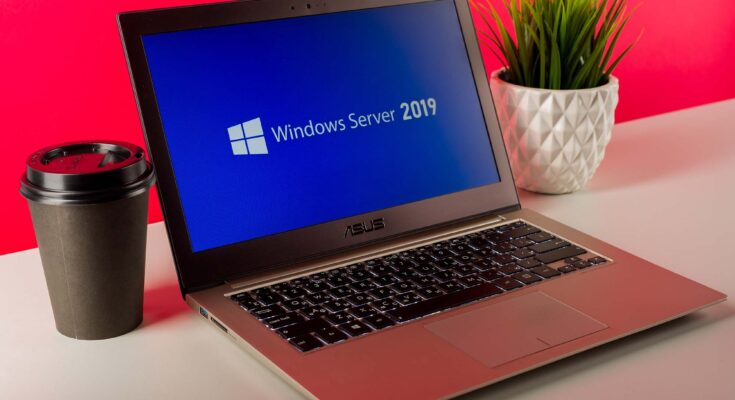If you manage any Windows Servers — whether for your business, your side hustle, or your clients — this one’s big.
Microsoft recently confirmed that hackers are actively exploiting a serious vulnerability in Windows Server Update Services (WSUS), tracked as CVE-2025-59287. The flaw allows attackers to execute remote code with SYSTEM-level privileges, giving them near-total control of a vulnerable system.
Here’s what went down, why it matters, and what you should be doing right now.
🚨 What Happened
WSUS is Microsoft’s system that helps IT admins manage and deploy Windows updates across their network. It’s supposed to keep things safe and organized — but in this case, it opened the door for attackers.
The vulnerability stems from how WSUS handles certain types of data — a deserialization flaw that allows attackers to send malicious requests to a WSUS server. Once exploited, hackers can run their own code remotely and potentially push malicious updates to every machine that trusts that WSUS server.
Security researchers found over 2,800 WSUS servers exposed online, and Microsoft issued an emergency out-of-band update after confirming the bug was being actively used in real-world attacks.
CISA (the U.S. Cybersecurity and Infrastructure Security Agency) has added this bug to its Known Exploited Vulnerabilities list and ordered federal agencies to patch by November 14, 2025 — which tells you how serious this is.
🧠 Why It Matters to Small Businesses & Side-Hustlers
Even if you’re not running a large IT department, this one still matters.
Many small businesses, managed service providers (MSPs), and even home labs use WSUS for patch management.
If your WSUS server is compromised:
- Attackers can install malware disguised as Windows updates.
- They can move laterally through your network and access files, credentials, or connected devices.
- Your server could become part of a larger attack chain — potentially used to deploy ransomware.
And because this exploit requires no user interaction, even cautious users can be impacted.
For anyone running their own IT environment — like a small e-commerce store, freelance design business, or side hustle with internal servers — this vulnerability is a reminder that patch management isn’t optional. It’s mission-critical.
🛠️ How the Attack Works (Simplified)
Here’s what researchers have observed in the wild:
- Attackers find an exposed WSUS server, usually running on port 8530 or 8531.
- They send a malicious POST request to a WSUS web service endpoint.
- The WSUS server then executes PowerShell commands under SYSTEM permissions — giving attackers full control.
- From there, the hacker can:
- Harvest credentials
- Spread to other machines
- Inject fake Windows updates into the WSUS system
That’s why Microsoft rushed to patch this — it turns a trusted Windows feature into a potential distribution tool for malware.
🔒 What You Should Do Right Now
If you or your IT provider use WSUS, take these steps immediately:
✅ 1. Apply the Patch
Microsoft has released a critical update that fixes CVE-2025-59287.
Run Windows Update on your servers, or manually download the patch from Microsoft’s site.
Then reboot the WSUS server to finalize the fix.
Note: The original October Patch Tuesday update didn’t fully resolve this issue — make sure you’ve installed the new out-of-band version released on October 24, 2025.
🔌 2. Lock Down WSUS Access
If you can’t patch right away:
- Restrict inbound traffic on ports 8530 and 8531.
- Limit access to WSUS from internal IPs only.
- If WSUS isn’t essential for your setup, disable the service temporarily until it’s patched.
🔍 3. Check for Suspicious Activity
Review your WSUS and IIS logs for:
- Unexpected PowerShell or cmd.exe executions.
- POST requests to:
ReportingWebService.asmxSimpleAuthWebService.asmx
- Any strange outbound network activity.
If you find anything unusual, isolate the server and run a full malware scan.
🧱 4. Strengthen Your Defenses
This incident is a wake-up call to harden your setup:
- Avoid exposing WSUS to the internet whenever possible.
- Segment your update servers from critical business systems.
- Enable endpoint detection (EDR) to catch post-exploitation activity.
- Keep regular, tested backups — offline or offsite.
💡 Byte-Talk’s Take
WSUS may not sound exciting, but it’s a reminder that trusted infrastructure can become an attack vector overnight.
For small business owners and side-hustlers, cybersecurity isn’t just an enterprise problem anymore.
Even one compromised server could lead to downtime, stolen data, or financial losses you can’t easily recover from.
Take this as your cue to:
- Audit your systems.
- Patch what you can.
- Talk to your IT provider about your update and security processes.
Your future self (and your business) will thank you.
🧭 Quick Action Checklist
- Apply Microsoft’s WSUS patch (CVE-2025-59287)
- Reboot your server
- Block ports 8530 and 8531 from public access
- Check logs for unusual POST requests or PowerShell use
- Verify your WSUS isn’t exposed to the internet
🗓️ Final Thought
We say this a lot at Byte-Talk, but it’s worth repeating: security starts with awareness.
Don’t assume your system is safe just because it’s “inside the network.”
Attackers thrive on assumptions — and this WSUS flaw is proof.
Stay patched, stay aware, and keep your side hustle secure.




